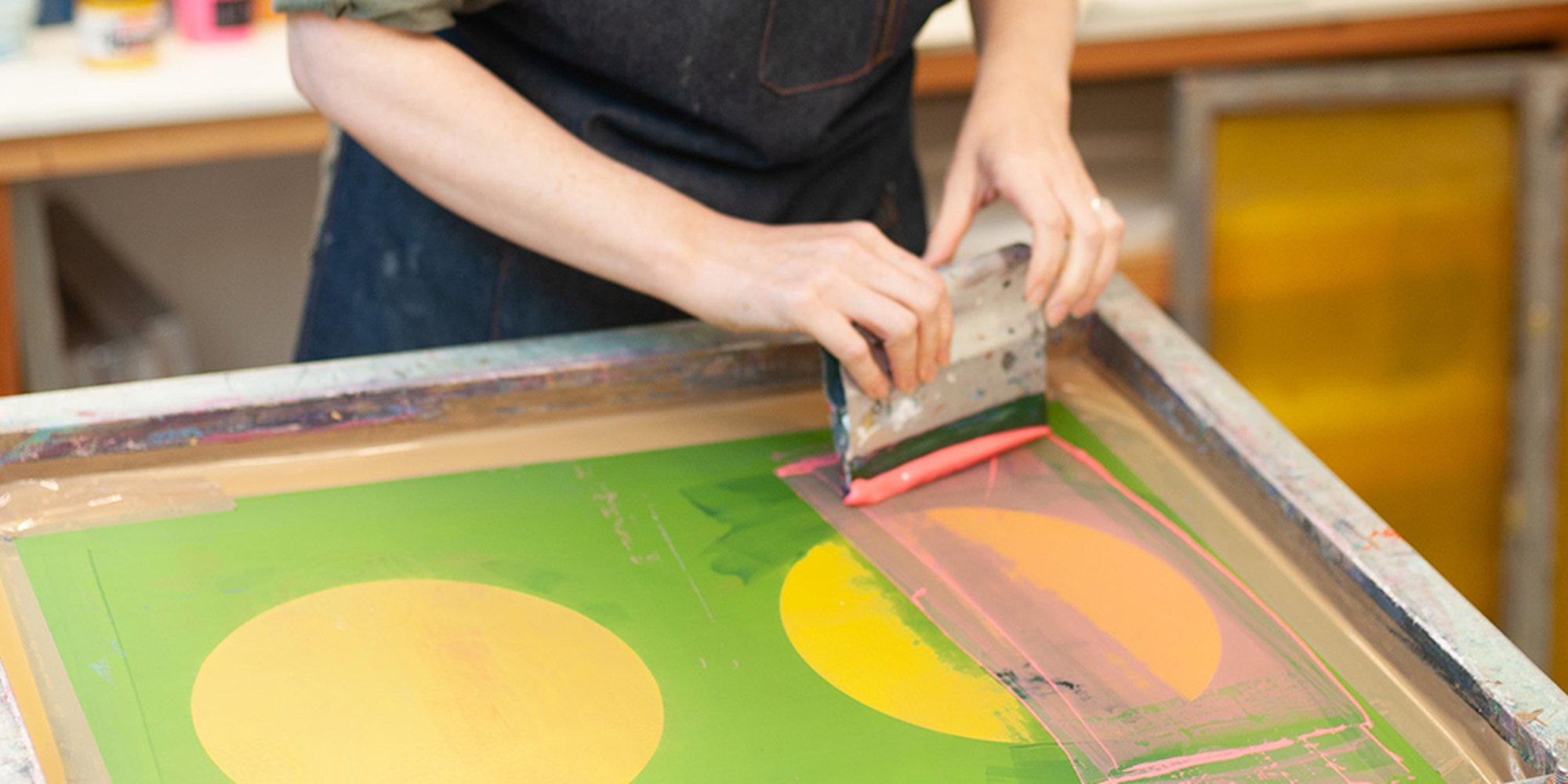The Necessary Guide to Comprehending Screen Printing and Its Versatile Makes use of
Screen printing has an abundant background that dates back to old times, evolving right into an advanced technique made use of throughout various industries today. This guide explores the complexities of the screen printing process, outlining its applications in home, fashion, and marketing design - 10:9 Design contact. Comprehending these basics can open creative capacity for both artistic and industrial projects. The following areas will reveal vital ideas and techniques to improve one's screen printing endeavors
The Background of Screen Printing
Screen printing has origins that trace back centuries, its advancement reflects the imaginative and technological developments of different societies. Coming from ancient China, the strategy was initially used for decorating fabrics and later infect Japan, where it came to be integral to Ukiyo-e woodblock printing. The method changed to Europe in the 18th century, where it gained popularity amongst craftsmens and commercial printers. The creation of image emulsion in the 20th century transformed screen printing, permitting even more intricate styles and better effectiveness. Artists like Andy Warhol better drove its popularity, utilizing the medium to develop legendary works that combined commercialism and art. By the late 20th century, screen printing had established itself as a versatile method, employed in vogue, advertising and marketing, and art. Today, it remains to develop, integrating electronic technology and broadening its applications across different industries.
The Screen Printing Refine Explained
Screen printing transforms artistic visions into substantial layouts via a series of precise steps. Initially, a photo is created and afterwards moved onto a screen, usually constructed from fine mesh material stretched over a framework. A light-sensitive emulsion is related to the screen, which is exposed to light, hardening in locations not covered by the photo. After rinsing the unhardened solution, a pattern is formed.
Next off, the screen is placed over the substratum, whether it be fabric, paper, or another material. Ink is after that pushed with the open areas of the pattern making use of a squeegee, transferring the style onto the substratum listed below. This process can be duplicated for multiple colors, calling for different screens for each color. Finally, the published product is treated making use of warm to guarantee the ink sticks properly, causing a sturdy, dynamic design ready for usage.
Kinds of Screen Printing Techniques

In addition, specialty strategies, such as discharge screen printing, remove color from the fabric to develop softer prints, while foil screen printing applies metal aluminum foil to accomplish a shiny surface (10:9 Design LLC Company). Each strategy provides distinctive characteristics, satisfying different imaginative requirements and manufacturing scales, inevitably expanding the opportunities within the screen printing domain
Applications of Screen Printing in Numerous Industries

Furthermore, the signage and advertising industries use screen printing for creating appealing screens and banners. This method enables vibrant shades and elaborate styles that record interest. In electronics, screen printing is employed for using conductive inks to circuit card, important for part links. In addition, the home design market welcomes screen printing to generate distinctive designs on textiles and wall surface art. Generally, screen printing offers as a critical tool throughout varied areas, enhancing products with customized and aesthetically appealing graphics.
Tips for Successful Screen Printing Projects
While carrying out a screen printing job, cautious interest to information can significantly improve the last result. Picking high-grade products is necessary; this consists of the screen, inks, and substratums. Utilizing suitable mesh matters can influence ink deposition and information resolution. Prep work is just as important; extensive cleaning of screens and proper exposure times guarantee crisp prints.
Next, accurate registration is critical for multi-color prints. Utilizing alignment tools important site can aid attain specific layering. In addition, screening prints on scrap products prior to production assists recognize possible problems without throwing away sources.

Regularly Asked Inquiries
What Materials Are Best for Screen Printing on Material?
Cotton and polyester blends are suitable for screen printing on textile as a result of their durability and ink absorption. Furthermore, specialty fabrics like silk or canvas can produce unique textures and surfaces, improving the total layout high quality.
How Do I Tidy and Maintain Screen Printing Tools?
To maintain and clean screen printing tools, one need to regularly clean screens with suitable solvents, inspect mops for wear, lube moving parts, and shop all things in a dry, dust-free environment to prolong their life-span.
What Are the Environmental Impacts of Screen Printing?
Screen printing can have significant ecological effects, including chemical waste from solvents and inks, water use during cleansing processes, and power usage. Environmentally friendly materials and sustainable techniques are essential for lessening these adverse impacts.
Can Screen Printing Be Done in your home Properly?
Screen printing can be properly done at home with the ideal products and methods. Enthusiasts can produce top quality prints, though success depends upon their ability level, devices, and understanding of the procedure included.
What Are the Prices Connected With Beginning a Screen Printing Service?

Starting a screen printing company includes prices for tools, materials, and work area. Preliminary expenditures typically range from a few hundred to a number of thousand bucks, relying on the range, top quality of machinery, and desired production capability.
Screen printing has a rich background that dates back to old times, progressing right into a sophisticated technique used across various markets today. One more method, rotating screen printing, utilizes cylindrical screens, assisting in continual printing on textile rolls, thereby enhancing efficiency for large-scale productions. Additionally, specialty strategies, such as discharge screen printing, visit this website remove color from the textile to develop softer prints, while aluminum foil screen printing uses metal foil to accomplish a shiny finish. In the fashion sector, screen printing is extensively made use of to develop vibrant designs on apparel, enabling brands to display their special designs. Cotton and polyester blends are suitable for screen printing on material due to their toughness and ink absorption.